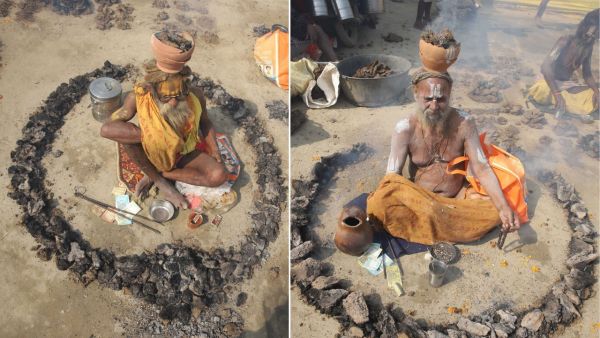
Mahakumbh is not just a festival of faith and bath. Rather it is also a confluence of sacrifice, penance and practice. Different types of difficult practices are performed here by different akharas and sadhus. One such unique practice is Panch Dhuni austerity, which is also called the practice of fire bath.
This difficult practice started with the festival 'Amrit Snan' of Basant Panchami. The Mahakumbh region is a place of tenacity and spiritual practice, where some seeker in every corner appears absorbed in his practice. In this sequence, Panch Dhuni Tapasya started from Basant Panchami in Tapasvi Nagar, there is a lot of enthusiasm among the devotees to see.
In this practice, the seekers make many circles of fire burning around them and sit in the middle and do penance. The slight heat of ordinary fire can scorch the skin of a human being, but they do meditation in the middle of the heat. This rigorous practice is similar to the examination of fire, in which the seekers meditate and chant while controlling their body and mind.
Agni bath practice is mainly prevalent in Vaishnava Akhadas. In this, especially the monks of Digambar Ani Akhara and the saints of All India Panch thirteen brothers Tyagi Khalsa participate. According to Mangal Das, the Mahant of Shri Digambar Ani Akhara, this is the first process of becoming a sadhana as recluse. It is also considered by the Guru's examination of his disciple.
At the beginning of Panch Dhuni austerity, the seeker burns the fire from the dung (cow dung) and makes small fire bodies around him by taking fire from the main fire. During spiritual practice, the fire kept in every fire body, pressing it in the monk tongs and then puts it back in the fire body.
During this process, the seeker puts a cloth on his feet and pronounces Gurmantra. This difficult practice, the monk has to do five months every year (from Basant Panchami to Ganga Dussehra) for 18 consecutive years. During this time, the seeker is required to keep complete control over his mind and body.
The main objective of this practice is the examination of self -control, tolerance and dedication to the guru. Through hard penance, the seeker awakens his spiritual power and makes the path of his disinterest (retirement) strong.
This practice is not only tested for the patience and self -control of the monk, but it shows that the human body and mind can remain strong even in difficult conditions like fire. Such difficult practices during Mahakumbh show how important dedication and rigorous penance is for spiritual progress.